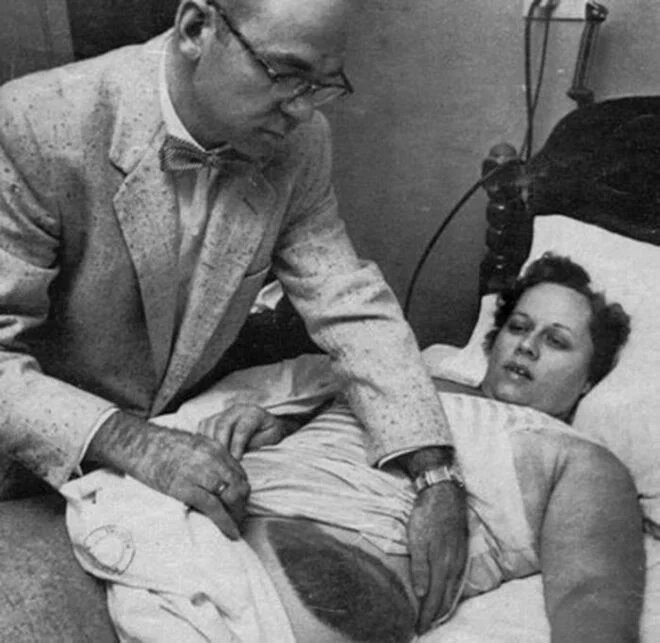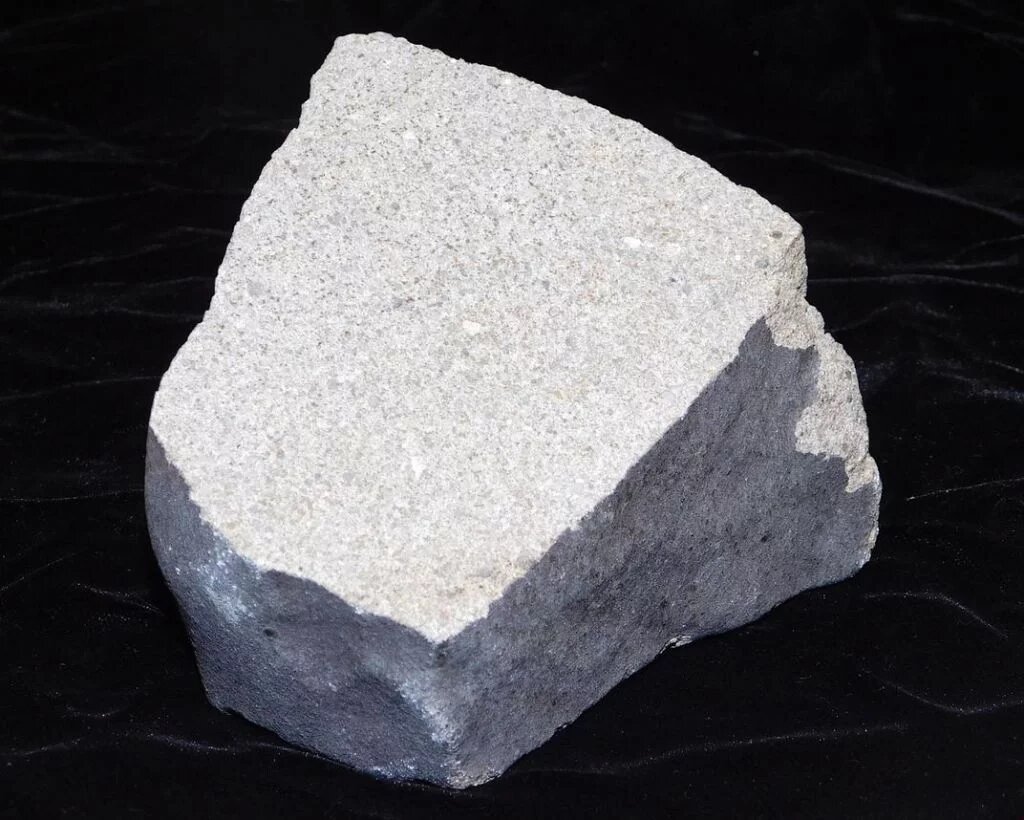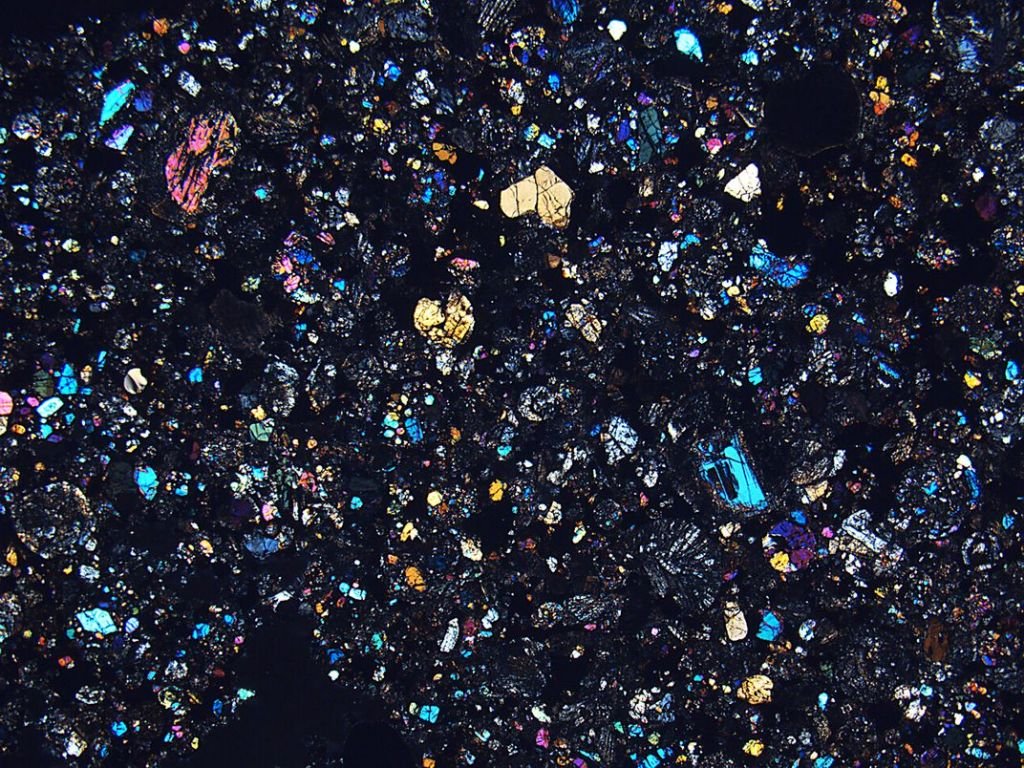Ann Elizabeth Hodges was taking a nap on the sofa in her living room at her home in Sylacauga, Alabama, around 2:26 pm local time, when loud noise woke her up. She and her mother were slow to understand what had happened. Their house was covered in dust, so they initially thought the chimney had collapsed and broken the radio. But what was that rock on the floor?
As she tried to understand what had happened, Ann noticed a giant bruise on the left side of her body. Then she and her mother called the police and the fire department. With the arrival of the authorities, a crowd began to gather in front of the house, realizing that something big was happening.
A few minutes earlier, the city was struck by a reddish glare that tore through the sky at an impressive speed of about 200 km/h. Later reports appeared that the same flare had been sighted in cities in Georgia and Mississippi. A lot of people thought it would be a plane crash, and were looking for the crash site. But the fact that the house where the impact apparently occurred was still standing began to raise doubts in the story.
In fact, it was neither a plane nor a fall from a chimney. What cut across the sky was a meteor, and what rumbled into the room of the Hodges house was a meteorite. After opening a hole in the ceiling, the rock still bounced off the living room radio and hit the left side of Ann’s body, leaving the huge bruise and a mark that followed her for the rest of her life. As a result, she became the first and only person to date officially registered as a direct victim of a meteorite – something that has only one in 1,600,000 chance of happening.
Rarer than being caught in tornado, hurricane and lightning at the same time

According to astronomer Michael Reynolds, in an interview with National Geographic, “you are more likely to be hit by a tornado, lightning and hurricane at the same time” than by a meteorite. Not that the fall of these celestial objects is unusual: it is estimated that 17 meteorites fall to Earth every day, usually in the ocean or in remote areas.
In 2013, an object fell with a heavy explosion in Russia’s Ural Mountains, leaving at least 1,000 people injured. But none for the direct impact. The injuries were caused by window splinters and structures that collapsed on impact. On November 10 of this year, another meteorite tore the sky of states in the central US. The NASA estimates that a stone was the size of a basketball left behind by an asteroid. In this case, despite the numerous videos on the internet, the meteorite did not hurt anyone.
There is a fatal accident involving another meteorite. In 1972, a cow in Venezuela was hit by an extraterrestrial rock and could not resist injuries. There are even other unconfirmed reports of people who would have been hit by meteorites, but only Ann’s case has been officially confirmed. However, there is no record of anyone who was caught by the three natural phenomena cited by Reynolds at the same time.
“Ninety-nine percent of meteorites come from the asteroid belt between Mars and Jupiter,” said Carl Corrigan, a research geologist at the Smithsonian Museum of Natural Art. “We believe many have materials very similar to those that formed the earth,” he said. The Sylacauga meteorite, as the object became known, was identified as a chondrite composed of more iron and nickel than terrestrial rocks.
Meteorite battles

At the time of the accident, Ann was lying down because she didn’t feel very well. Little did he know that this little malaise was just the beginning of her problems. Her husband, Eugene, arrived home late that day and only then he learned that something of such importance had happened in his home. He surprised the crowd in front of his house, which stood curiously in front of a drive-in movie theater called The Comet.
“We had a little excitement around here today,” Ann told the Associated Press. The noise was so big that only the next day she was taken to the hospital to arrive if the bruise was not something more serious. “I haven’t been able to sleep since I was hit,” she told reporters.
In the meantime, the authorities demanded that the meteorite be handed over for expert analysis, who had to determine if it was really an object from space. Authorities assured that the rock would be returned later. Research has found that it hangs on an interplanetary rock about 4.5 billion years old.
Back in the hands of the Hodges couple, the meteorite began a new battle: who was the real owner of the object? It turns out that the Hodges lived on rent, and the housekeeper claimed for herself the ownership of the object. Before a court battle began, the Hodges made a deal and paid $500 to keep the 4-kilogram rock.

The dispute with the homeowner lasted about a year. When it was closed, Eugene could no longer find a buyer for the meteorite, which was used for years as a doorjamb, until it was finally donated to the Alabama Museum of Natural History and displayed under the name of Sylacauga Meteorite – but It is also called the Hodges Meteorite.
Ann never fully recovered from the meteorite shock, and the fact that she had become something of a pre-internet subcelebrity didn’t help. She was the cover of Life magazine on December 13, 1954, under the title A Great Bruise From Heaven. Ann’s national attention is believed to have worsened the state of her mental health and, as a result, her marriage also deteriorated, with the couple divorcing in 1964. At 52, Ann died in a nursing home as a result of a renal failure.
The other half of the object
The Hodges never made a profit from the meteorite that crashed into their house, but the other half of the object had a completely different story. Farmer Julius Kempis McKinney found the rock while riding his mule-powered cart.
At first he paid no attention to the stone that stood in the way. Later, upon seeing the news of the Hodges on the news, he returned to the site and collected the meteorite. The farmer then contacted a lawyer, who helped him announce the sale of this strange object of spatial origin.
Unlike Eugene Hodge, McKinney was successful in his endeavor. According to reports at the time, the money he got was enough to buy a house and a car. Subsequently, the rock was donated to the Smithsonian Museum, where it remains today.
In 2017, a piece of this meteorite was sold by Christie’s, a famous auction company. The size of a dime, the piece of rock yielded $7,500, at an impressive $768 per gram. At the time, a 24-carat gram of gold was valued at $39.05. It is one of the highest rated objects in history.
Source: Smithsonian.com, National Geographic